Results 6,241 to 6,250 of 12096
Thread: Anandtech News
-
08-25-16, 06:32 PM #6241
Anandtech: Xiaomi Launches Redmi Note 4 in China
While we normally don’t cover China-only smartphone releases, Xiaomi is a fairly major player as far as volume as they were one of the first companies in the industry to ship high-end hardware for mid-range prices. We also tend to see that these devices eventually filter out to a more global launch, which The Xiaomi Redmi line has been a solid success pretty much anywhere it shipped, and today Xiaomi launched an update to their Redmi Note line, the Redmi Note 4.
At a high level the Redmi Note 4 is shipping with fairly aggressive specs for the price, which starts at 135 USD for the model with 2GB of RAM and 16GB of internal storage, and 180 USD for the model with 3GB of RAM and 64GB of internal storage.
There’s also a micoSD slot so the 16GB internal storage isn’t necessarily the end of the world.
All SKUs ship with MediaTek’s Helio X20 SoC, but instead of a 2.5 GHz Cortex A72 at the high end it looks like Xiaomi is shipping a 2.1 GHz variant which could either be downclocked deliberately to reduce peak power consumption or a cost saving measure. To try and push for as much battery life as possible, Xiaomi has also shipped a 15.7 WHr battery in this device or 4100 mAh which is probably partially to offset the use of an SoC on a planar 20nm process, and also because most of the people buying phablets are likely doing so due to the battery life benefits. This battery is charged through conventional quick charge at 10W, so charge time may be a bit on the long side but I wouldn’t be surprised if this is a move to improve battery longevity and meet the fairly tight cost target.
The display is a 5.5 inch 1080p unit with a claimed maximum brightness of 450 nits, contrast ratio of 1000:1, and sunlight display technology similar to Apical’s Assertive Display which dramatically improves outdoor visibility beyond what you might expect from a display of that brightness. There’s a mention of 72% NTSC gamut which leads me to believe that this is targeting sRGB fairly well depending upon display settings similar to the Mi Note and Mi Note Pro.
The rear camera is a 13MP unit with PDAF and the front facing camera is a 5MP sensor. Both have an f/2.0 aperture but I don’t really see any mentions of the supplier of the module or sensor here. I suspect that this is going to be a Samsung ISOCELL sensor or something similar on the rear but absent actual data this is just a wild guess.
As far as connectivity goes 802.11a/b/g/n/ac, WiFi Direct, and Bluetooth 4.2 are supported. There’s no explicit discussion of NFC connectivity but seeing as how Mi Pay and AliPay is supported as an NFC-based mobile payments service the Redmi Note 4 should support NFC. For cellular connectivity LTE category 6 and VoLTE are supported, and looking at Xiaomi’s page it looks like GSM bands 2/3/8, WCDMA bands 1/2/5/8, TD-SCDMA bands 34/39, FDD-LTE bands 1/3/5/7/8, and TD-LTE bands 38/39/40/41 are supported for this specific variant. There’s also a mention of support for CDMA2000/1X BC0 which is interesting to see. Dual SIM is supported but when using two SIMs it isn’t possible to use microSD. GPS, GLONASS, and Beidou are supported as GNSS constellations, and there’s an IR port, gyro, accelerometers, proximity sensors, ambient light sensor for auto brightness, and a magnetic hall sensor for things like flip covers. All of this is packaged into a phone that is 151x76x8.35mm and weighs 175 grams, which is actually fairly impressive considering its size, the aluminum unibody, and 15.7 WHr battery. The only real spec out of place at a high level is the lack of USB-C reversible connector, but microUSB is acceptable given the price.
Putting aside the specs, this is actually looking to be a fairly promising phone. We can talk about whether Xiaomi is copying Apple or not, but the Redmi Note 4 seems to have a fairly unique design due to its rear camera placement and the use of a large circular lens somewhat reminiscent of HTC designs, but combines with a dual color LED mounted just below the camera and a fingerprint scanner that appears to be identical in shape to the camera lens between the two. The design of the Redmi Note 4 looks great considering the price, and there’s some irony in that for all of the marketing bluster surrounding the Note7’s symmetrical design, the Redmi Note 4 has visibly better overall ID detailing and overall symmetry. The use of the 2.5D glass, chamfered edges, and slightly curved back should also make for solid ergonomics while allowing for things like tempered glass screen protectors. The fingerprint scanner also is said to be one that allows for learning such that it extends the map of your fingerprints over time to allow for faster, more reliable use. MIUI 8 also has some interesting new features such as the ability to enter either a standard or private user mode depending upon the password/PIN/pattern you enter similar to a KNOX secure folder.
Overall, the Redmi Note 4 from a distance looks to be a fairly impressive phone. It wasn’t all that long ago that things like aluminum unibody design, fast-focusing rear cameras, high quality, high density displays, and fingerprint scanners were impossible to find in a single package for a phone under 200 USD, and Xiaomi has managed to ship a phone with all of these things. It’ll be interesting to see how they manage the transition for the Redmi Note 4 to a global audience, which would likely mean a Qualcomm SoC and new RF front-end, but it’ll be interesting to see all the same. The Xiaomi Redmi Note 4 will be available in China in silver, gold, and gray, and the 2/16GB variant will retail for 899 RMB or 135 USD, and the 3/64GB variant for 1199 RMB or 180 USD.
More...
-
08-26-16, 07:05 AM #6242
Anandtech: The Meizu PRO 6 Review
The Meizu PRO 6 features an attractive design and excellent build quality, but is not a clear upgrade over the previous generation PRO 5. Lurking inside its all-aluminum chassis is a MediaTek Helio X25 SoC with a deca-core CPU and 4GB of RAM. Its defining feature, however, is a 5.2-inch 1080p SAMOLED display, which helps it stand out amidst a forest of phablets.
More...
-
08-26-16, 07:05 AM #6243
Anandtech: Eurocom Sky E9E2 Laptop: Intel Core i7, Two NVIDIA GeForce GTX 1080/1070 G
Eurocom has released one of the world’s first laptops featuring two NVIDIA’s GeForce GTX 1080/1070 GPUs, along with one of Intel’s latest Core i7 CPUs for good measure. The Sky E9E2 machine is designed primarily for gamers, but it can also be equipped with up to 64 GB DRAM, up to 6 TB of storage and even optional 120 Hz display panels. Given the high-performance goals of the system, it not only costs a lot but also comes in a thick chassis designed to fit 17.3" screens as well.
The Eurocom Sky X9E2 notebook is based on the Intel Z170 PCH and supports socketed Skylake-S processors (Intel Core i7-6700K, i5-6600K and i7-6700 options are available) that can be overclocked. The machine can fit up to four SO-DIMMs for a total of 64 GB of DDR4 memory, although maximum XMP support isn't directly listed. For graphics, the X9E2 uses one or two NVIDIA GeForce GTX 1070/1080 graphics processors in an MXM form-factor, which have 120-190 W TDP per card, but the system promises to deliver desktop-class performance in mobile form-factor. Installing a rather hot GPU into modern gaming laptop chassis should not be a problem in general, but Eurocom’s Sky X9E2 is among the first machines to integrate up to two Pascal graphics processors with a potential total TDP of
-
08-26-16, 09:57 AM #6244
Anandtech: HP Announces EliteBook Laptops with On/Off Sure View Privacy Screens
On Thursday, HP introduced adjustable privacy screens for the EliteBook 840 as well as the EliteBook 1040 notebooks. These are aimed at business users concerned about visual hacking and disclosing sensitive information to onlookers (something a number of journalists have to consider when working on NDA information when flying back from a press event). The protective measures for the screens are based on the Sure View technology jointly developed by HP and 3M, which relies on a number of HP’s proprietary technologies as well as 3M’s optical films. Ultimately, the user can control the privacy with an on/off switch as required, rather than equipping a perminant film that can reduce comfort. Right now, the Elitebook laptops are the first batch to get the technology, but eventually HP’s Sure View technology may appear on other PCs from the company depending on feedback.
In the conference call, HP was keen to point out that according to the Pew Research Center, around 60% of employees nowadays take their work outside of office walls and can potentially (without knowing) share confidential information with the wrong people. Most users that have to work while on the move might not be aware of who is staring at their displays from the back or from the side (which is incredibly annoying in general even if you are playing Tetris). Knowing that, HP explained that some employees tend not to work with sensitive data in public places, which can reduce their overall productivity. Meanwhile there is a market to ensure privacy in cafes, airports and other venues - other people install aftermarket privacy screens on their laptops. While that helps businesses to better comply with regulatory requirements in healthcare, finance and industries dealing with sensitive information, such screens reduce viewing angles of notebooks which affects overall user experience. By contrast, HP’s Sure View can be turned on and off, thus improving privacy without persistent reduction of viewing angles of laptop screens.
HP’s Sure View technology uses a special film from 3M as well as HP’s own backlighting. When the setting of the backlighting is adjusted, the film decreases viewing angles of the display down to around 35 degrees (adjustable). The tech can be activated by pressing Fn + F2 and can be further adjusted by pressing other combinations of buttons. HP claims that the technology can be used with different display panels, but initially the company will use the technology TN or SVA panels with FHD resolution. The Sure View does not consume extra power and since it relies on different setting of the backlighting, it might help to improve battery life a bit. HP does not reveal the price of its integrated privacy screen technology, but claims that with higher-end configs it will be virtually free. Moreover, the company mentioned that since it is not just a film on top of the display itself, it is going last throughout the lifetime of the laptop.
As for configurations, the HP EliteBook 840 G3 and the HP EliteBook 1040 G3 are 14” laptops based on Intel’s dual-core Core Skylake-U chips with integrated HD Graphics 520 and vPro (select models only). They come with up to 32 GB of DDR4-2133 memory and use 2.5” HDDs/SSDs (EliteBook 840) or M.2 SSDs (EliteBook 1040). The notebooks are equipped with 802.11ac WiFi + Bluetooth modules, Gigabit Ethernet (via dongle in case of the 1040) as well as an LTE or HSPA+ WWAN module. As with many business PCs, the systems are equipped with anti-spill keyboards, fingerprint readers (optional in case of the 840) and TPM 1.2/2.0 modules.
Both laptops feature 14” display panels and are fairly light and thin for mainstream business models. The EliteBook 840 weighs 1.48-1.7kilograms and is 1.89-2.02cm thick (the peak values for touch-enabled models. Meanwhile, the EliteBook 1040 weighs starting at 1.43 and is 1.58-1.65cm thick. Depending on the exact configuration, the EliteBook 840 can work for up to 13.5 hours, whereas the EliteBook 1040 can boast with 10 to 11.5 hours of battery life. Since configurations of the notebooks can vary, HP does not mention recommended prices, but we are talking about machines that start at around $1200 and can end up at $2000 or higher. B2B sales will differ in price depending on volume and support packages. Users should see systems with Sure View privacy screens available in September.
Gallery: HP Rolls-Out EliteBook Laptops with Adjustable Sure View Privacy Screens





More...
-
08-26-16, 11:08 AM #6245
Anandtech: Intel’s 140GB Optane 3D XPoint PCIe SSD Spotted at IDF
As part of this year’s Intel’s Developer Forum, we had half expected some more insights into the new series of 3D XPoint products that would be hitting the market, either in terms of narrower time frames or more insights into the technology. Last year was the outing of some information, including the ‘Optane’ brand name for the storage version. Unfortunately, new information was thin on the ground and Intel seemed reluctant to speak any further about the technology that what had already been said.
What we do know is that 3D XPoint based products will come in storage flavors first, with DRAM extension parts to follow in the future. This ultimately comes from the fact that storage is easier to implement and enable than DRAM, and the characteristics for storage are not as tight as those for DRAM in terms of break-neck speed, latency or read/write cycles.
For IDF, Optane was ultimately relegated to a side presentation at the same time as other important talks were going on, and we were treated to discussions about ‘software defined cache hierarchy’ whereby a system with an Optane drive can define the memory space as ‘DRAM + Optane’. This means a system with 256GB of DRAM and a 768GB Optane drive can essentially act like a system with ‘1TB’ of DRAM space to fill with a database. The abstraction layer in the software/hypervisor is aimed at brokering the actual interface between DRAM and Optane, but it should be transparent to software. This would enable some database applications to move from ‘partial DRAM and SSD scratch space’ into a full ‘DRAM’ environment, making it easier for programming. Of course, the performance compared to an all-DRAM database is lower, but the point of this is to move databases out of the SSD/HDD environment by making the DRAM space larger.
Aside from the talk, there were actually some Optane drives on the show floor, or at least what we were told were Optane. These were PCIe x4 cards with a backplate and a large heatsink, and despite my many requests neither demonstrator would actually take the card out to show what the heatsink looked like. Quite apart from which, neither drive was actually being used - one demonstration was showing a pre-recorded video of a rendering result using Optane, and the other was running a slideshow with results of Optane on RocksDB.
I was told in both cases that these were 140 GB drives, and even though nothing was running I was able to feel the heatsinks – they were fairly warm to the touch, at least 40C if I were to narrow down a number. One of the demonstrators was able to confirm that Intel has now moved from an FPGA-based controller down to their own ASIC, however it was still in the development phase.
One demo system was showing results from a previous presentation given earlier in the lifespan of Optane: rendering billions of water particles in a scene where most of the scene data was being shuffled from storage to memory and vice versa. In this case, compared to Intel’s enterprise PCIe SSDs, the rendering reduced down from 22hr to ~9hr.
It's worth noting that we can see some BGA pads on the image above. The pads seem to be in an H shape, and there are several present, indicating that these should be the 3D XPoint ICs. Some of the pads are empty, suggesting that this prototype should be a model that offers a larger size. Given the fact that one of the benefits of 3D XPoint is density, we're hoping to see a multi-terabyte version at some point in the distant future.
The other demo system was a Quanta / Quanta Cloud Technology system node, featuring two Xeon E5 v4 processors and a pair of PCIe slots on a riser card – the Optane drive was put into one of these slots. Again, it was pretty impossible to see more of the drive aside from its backplate, but the onscreen presentation of RocksDB was fairly interesting, especially as it mentioned optimizing the software for both the hardware and Facebook.
RocksDB is a high-performance key/store database designed for fast embedded storage, used by Facebook, LinkedIn and Yahoo, but the fact that Facebook was directly involved in some testing indicates that at some level the interest in 3D XPoint will brush the big seven cloud computing providers before it hits retail. In the slides on screen, the data showed a 10x reduction in latency as well as a 3x improvement in database GETs. There was a graph plotted showing results over time (not live data), with the latency metrics being pretty impressive. It’s worth noting that there were no results shown for storing key/value data pairs.
Despite these demonstrations on the show floor, we’re still crying out for more information about 3D XPoint, how it exactly work (we have a good idea but would like confirmation), Optane (price, time to market) as well as the generation of DRAM products for enterprise that will follow. With Intel being comparatively low key about this during IDF is a little concerning, and I’m expecting to see/hear more about it during Supercomputing16 in mid-November. For anyone waiting on an Optane drive for consumer, it feels like it won’t be out as soon as you think, especially if the big seven cloud providers are wanting to buy every wafer from the production line for the first few quarters.
More images in the gallery below.
Gallery: Intel’s 140GB Optane 3D XPoint PCIe SSD Spotted at IDF





More...
-
08-29-16, 07:08 AM #6246
Anandtech: Memory Frequency Scaling on Intel's Skull Canyon NUC - An Investigation
Overclocking has generally been the domain of enthusiasts with desktop rigs. However, increasing the CPU frequency beyond the official specification is not the only way to extract more performance from a computing system. Memory-bound workloads can benefit from memory hierarchies with increased bandwidth and/or lower latencies. Small form-factor (SFF) systems usually do not allow the DRAM to be operated beyond the standard JEDEC guidelines (up to 2133 MHz for DDR4). However, the Skull Canyon NUC (NUC6i7KYK) can support DDR4 SODIMMs operating at 2133 MHz+. Do increased memory frequencies deliver benefits in the Skull Canyon NUC? We benchmarked the system using five different SODIMM kits operating at various frequencies and latencies beyond the standard 2133 MHz. Read on for the results and analysis.
More...
-
08-29-16, 07:08 AM #6247
Anandtech: SilverStone Introduces VT101 Mini-STX Chassis for $35
At Computex, SilverStone started to show off its early mini-STX prototype cases. This week it introduced its first commercial product, the VT101. The new PC case inherits classic design elements of SilverStone chassis and despite the fact that Mini-STX is mainly intended for system integrators, SilverStone plans to sell its VT101 in retail as well.
Mini-STX is the latest iteration of form factor for motherboards, decreasing from the 17cm x 17cm of the mini-ITX into a 12.7cm square by ditching the full-length PCIe port as well as moving the power into an external brick for a DC-input. At Computex, especially at vendors such as Silverstone and ECS (who works closely with Intel for the NUC), Mini-STX was being pushed as the platform to have in certain commercial verticals, such as digital signage, where power and adjustability are important. It aims to fit above the Core-M mini-PCs in that regard.
While the interest for small form-factor PCs is increasing mainly because such systems are small, energy-efficient, and provide good enough level of performance, there is another reason for their growing popularity. Highly-integrated systems are usually pretty inexpensive and have additional flexibility to adjust the socketable CPU in the Mini-STX form-factor. Style, affordability and a certain degree of flexibility is what SilverStone hopes the VT101 is all about.
SilverStone’s VT101 chassis is made of 0.8 mm stainless steel and a weight just 582 grams. The case can fit in one Mini-STX motherboard with a cooler that is no higher than 34 mm as well as one 2.5” SSD or HDD. Theoretically, high-performance 34-mm coolers (such as Scythe Kodati) can support CPUs with up to 65 W TDP, hence, VT101-based Mini-STX systems can be quite powerful when paired with the appropriate hardware. The VT101 has one USB Type-A as well as one USB Type-C ports in addition to an audio in and audio out. Besides, the case has VESA mount mechanism. Initially SilverStone plans to offer the silver version of the case, but shortly it also plans to debut the black one. We also saw a blue one at Computex, which may come later.SilverStone VT101: Quick Specs Dimensions (W×H×D) 155mm (W) × 152mm (D) × 65mm (H)
1.53 LitersWeight 582 grams Motherboard Form-Factor Mini-STX PSU Form-Factor External / Power Brick 3.5" Drive Bays 0 2.5" Drive Bays 1 System Fan None CPU Cooler Dimensions Up to 34 mm in height External Connectors Audio in/out, USB Type-A and USB Type-C
Since the case is very small, it naturally does not cost a lot: the manufacturer intends to charge $35 for it in the U.S., once it is available in approximately three weeks from now. In Europe, the case will be available late in September.
Gallery: Silverstone Introduces Vital VT101 Mini-STX Chassis for $35





More...
-
08-29-16, 04:52 PM #6248
Anandtech: ASUS X99-E-10G WS Motherboard Launched: Dual 10GBase-T Ethernet via an Int
When we wrote up our list of 10GBase-T capable consumer motherboards back in July, we noted that out of the two main ways to get 10GBase-T on a motherboard, either by and add-in card or via an integrated controller, only one example of the latter existed on the market. For almost two years, that sole motherboard has been the only integrated solution – since then, ASUS launched the Maximus VIII Assembly which comes with a single port add-in card, and we saw a micro-ATX C236 model with a single port from MSI at Computex. We also listed the X99-E-10G WS from ASUS, a new board set to come to the market and we had an early sample. We’re still testing the board, but ASUS is officially announcing it today.
The X99-E-10G WS is built like a brick outhouse, with the focus on premium workstation parts and the latest set of features ASUS could put together while still under the X99 chipset banner, rather than a Xeon chipset. The board is designed for any Broadwell-E CPU, either consumer i7 or Xeon E5 v4, with extensive heatsink arrangements to carry both the Intel X550-AT2 controller (11W), the chipset, the upgraded power delivery and additional controllers.
The main feature is obviously the 10GBase-T ports, which are RJ45 compatible with most home and SMB networks. The X550-T2 controller is a PCIe 3.0 x4 part, which is an upgrade over the older X540-T2 generation that needed PCIe 2.0 x8 (and even at PCIe 3.0, you still needed 8 lanes due to controller limitations). This controller has a list price on Intel’s ARK of $80 for batches of 1000, however it probably adds nearer $100-$150 to the motherboard cost paid for by the end user. Alongside the Ethernet ports are a pair of 10 Gbps USB 3.1 ports (one Type-C), four USB 3.0 ports and the audio.
The board has full support for PCIe graphics, using a PLX8780 high-end PCIe switch. This allows support of x16/x16/x16/x16 slots (or x16/x8/x8/x8/x8/x8/x8) while also having enough bandwidth for the X550-T2 controller, a U.2 connector running at PCIe 3.0 x4 as well as an M.2 slot also at PCIe 3.0 x4. The PCIe slots have two additional features, with integrated guard rails in each of the slots to increase rigidity and reduce RMAs, but also the PCIe latches are translucent. When the system is turned on, the main PCIe slot connectors have a LED light that implements a slow breathing effect. Speaking with the motherboard product managers, it turns out that users do not often know which PCIe slots are suitable for maximum bandwidth, and this is designed to help.
The ASUS X99-E-10G WS also comes with 10 SATA 6 Gbps ports, dual USB 3.0 onboard headers, Dr. Power, BIOS Flashback, EZ XMP and an upgraded audio solution. ASUS expects the board to land with an MSRP of $650 with select authorized resellers and distributors soon.
Gallery: ASUS X99-E-10G Motherboard Launched: Dual 10GBase-T Ethernet via an Integrated X550-T2





More...
-
08-30-16, 05:21 AM #6249
Anandtech: Samsung Announces Exynos 7570 14nm Budget SoC
Today Samsung LSI launches a new 14nm SoC oriented at the budget and IoT segments. The new Exynos 7570 seems to be a a successor to the Exynos 3470 and Exynos 3475 found in a few of Samsung's budget lineups such as the Galaxy S5 Mini. The chip is a quad-core A53 setup which is said to improve performance by 70% and power efficiency by 30% over its predecessor, although exact clocks weren't publicized. Equally not specified was the GPU, although because of the advertised maximum 1280x800 resolution capabilities of the display pipeline, I wouldn't expect anything more than a very small implementation of a low-end Mali series.
The more interesting aspects of this new SoC is its connectivity features as not only does it feature an integrated UE Category 4 modem with 2x carrier aggregation capabilities, but it also as far as I know for the first time for S.LSI integrates WiFi, Bluetooth, FM and GNSS capabilities, features that have traditionally been left in the charge of dedicated solutions such as Broadcom WiFi SoCs (Which following the acquisition by Avago have exited that business segment).
Earlier this year we were surprised to see Samsung announce a 14nm mid-range product as we weren't expecting the economics of the new FinFET manufacturing processes to work out for anything other than flagships SoCs, but soon after Qualcomm followed suit with their own 14nm mid-range SoC. Today's announcement seems to further dispell the doom & gloom over FinFET manufacturing cost as the Exynos 7570's stictly low-end and IoT orientation makes it the first budget SoC on the new process and something as I see as a positive development as the industry continues to shift to full FinFET lineups.SoC Exynos 7570 Exynos 7580 Exynos 7870 CPU 4x A53 @ ?GHz 8x A53 @ 1.6GHz 8x A53 @ 1.6GHz GPU ? Mali T720MP3
@ 600MHzMali T830MP2
@ 700MHzEncode/
Decode1080p60
H.264Camera/ISP Dual ISP
21MP / (13+8)Dual ISP
16MP / (8+8)Dual ISP
16MP / (8+8)Integrated
ModemCat. 4
150Mbps DL
2x20MHz C.A.Cat. 6
300Mbps DL
2x20MHz C.A.Cat. 6
300Mbps DL
2x20MHz C.A.Connectivity WiFi, BT, FM,
GNSSN/A Mfc. Process 14nm 28nm HKMG 14nm
More...
-
08-30-16, 06:50 AM #6250
Anandtech: The AnandTech Podcast, Episode 37: IDF 2016, Alloy, Joule, Broxton, and AM
Today’s podcast covers the show known as the Intel Developer Forum, or IDF for short. IDF is an annual event focusing on new Intel technologies and product visions, showcasing what is new from small maker-like ‘Internet of Things’ devices all the way up to server platforms and everything in-between. Ian and Ryan were at the show, with plenty of meetings on tap. We found some time to put our thoughts on the announcements in a microphone.
The AnandTech Podcast #37: IDF 2016
The AnandTech Podcast - Episode 37
Featuring- Dr Ian Cutress, Host, Senior Editor (@IanCutress)
- Ryan Smith, Editor-in-Chief, (@RyanSmithAT)
iTunes
RSS - mp3, m4a
Direct Links - mp3, m4a
Total Time: 47 minutes 57 seconds
Outline mm:ss
00:00 - Start
01:20 - Intel IDF Keynote
01:40 - Project Alloy, Untethered VR
08:13 - Intel Joule IoT Platform
15:35 - Intel Broxton SoC
20:50 - Knights Landing
22:15 - Knights Mill
25:20 - AMD Zen
37:40 - AMD Naples
47:57 - FIN
Related Reading
IDF 2016 Keynote Live Blog
Intel Announces Project Alloy: Untethered Augmented Reality in a VR Headset
Intel Unveils Joule: A High-Performance Atom-Powered IOT Module and Maker Kit
More Details on Broxton: Quad Core, ECC, Up to 18 EUs of Gen 9
Intel Announces Knights Mill: A Xeon Phi for Deep Learning
AMD Zen Microarchitecture Part 1: Micro-op Cache, Schedulers and Memory Hierarchy
AMD Zen Microarchitecture Part 2: Extracting ILP, More Juicy Details
AMD Zen Server CPU and Motherboard Breakdown: 2P for Q2 2017
Unpacking AMD's Zen Benchmark: Is Zen actually 2% Faster than Broadwell?
More...
Thread Information
Users Browsing this Thread
There are currently 33 users browsing this thread. (0 members and 33 guests)




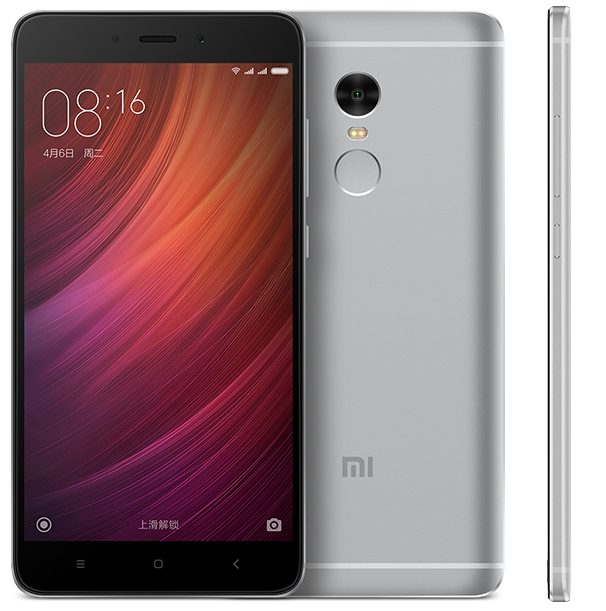
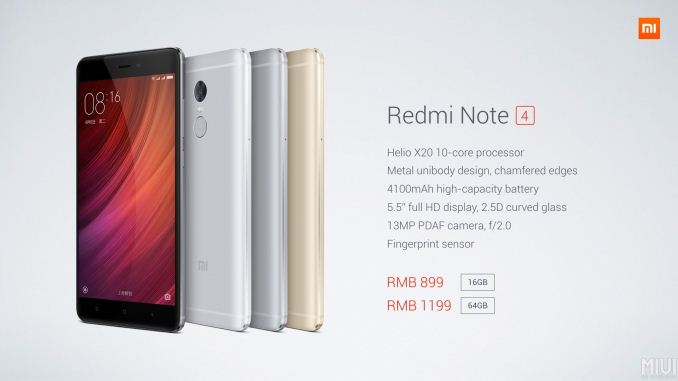
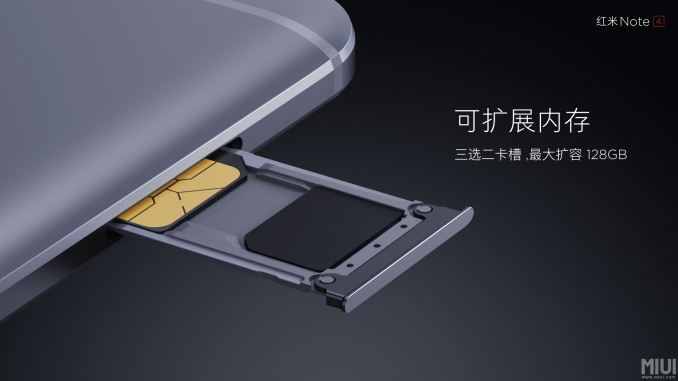
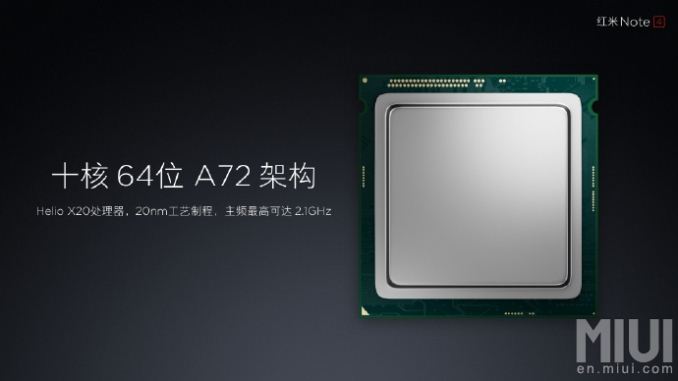

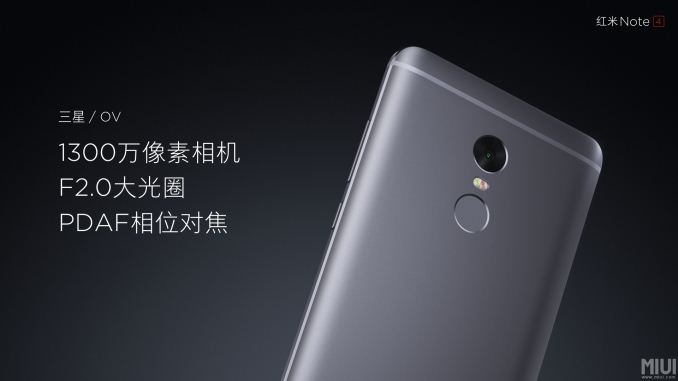

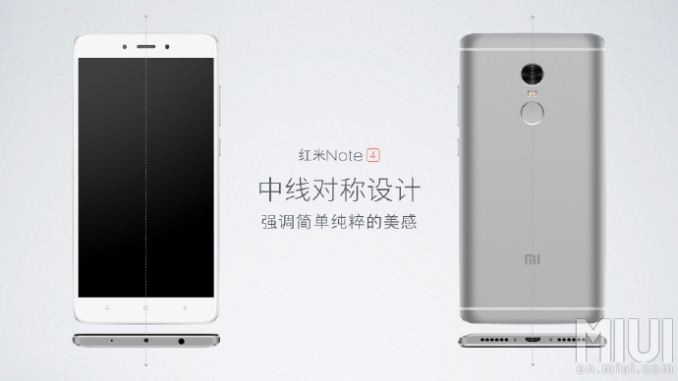
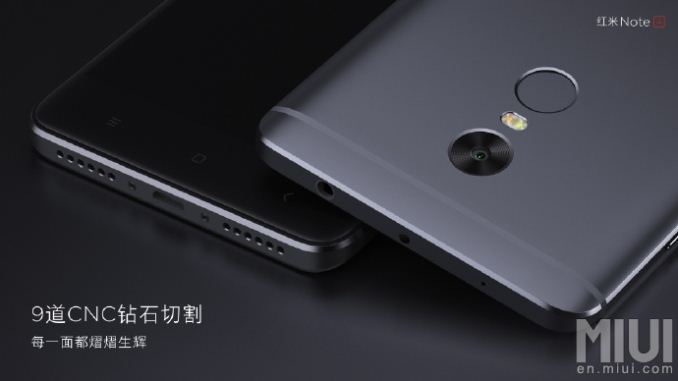


 Quote
Quote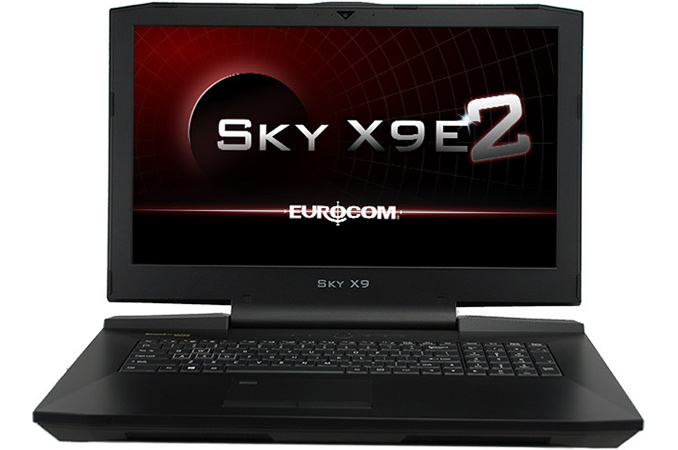


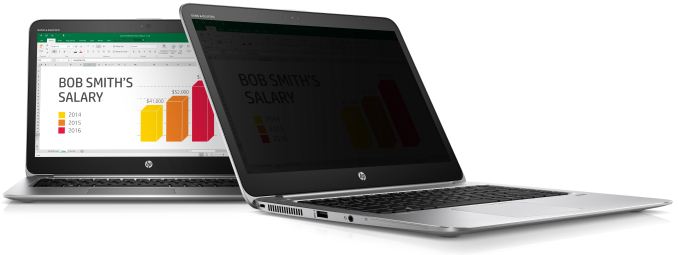


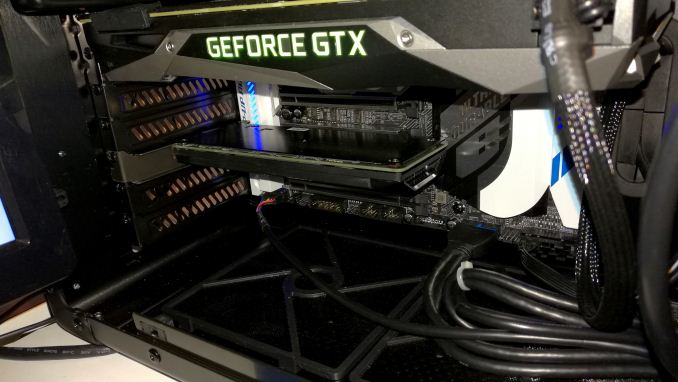
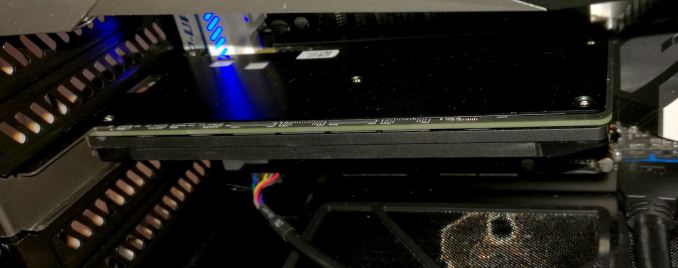


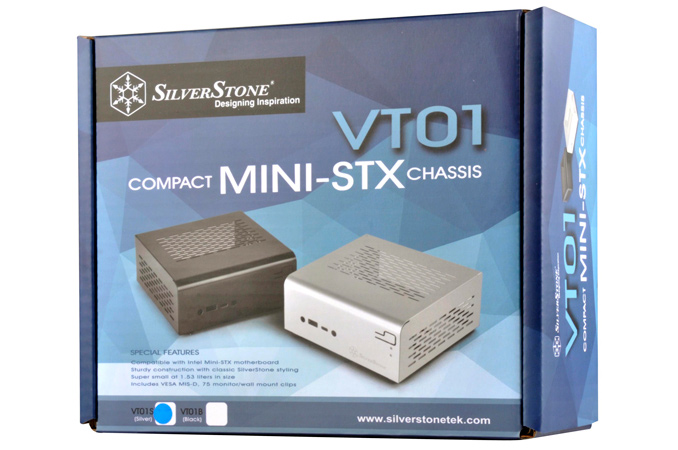

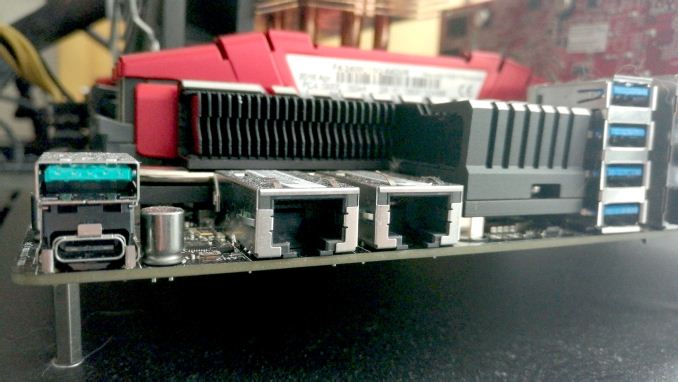
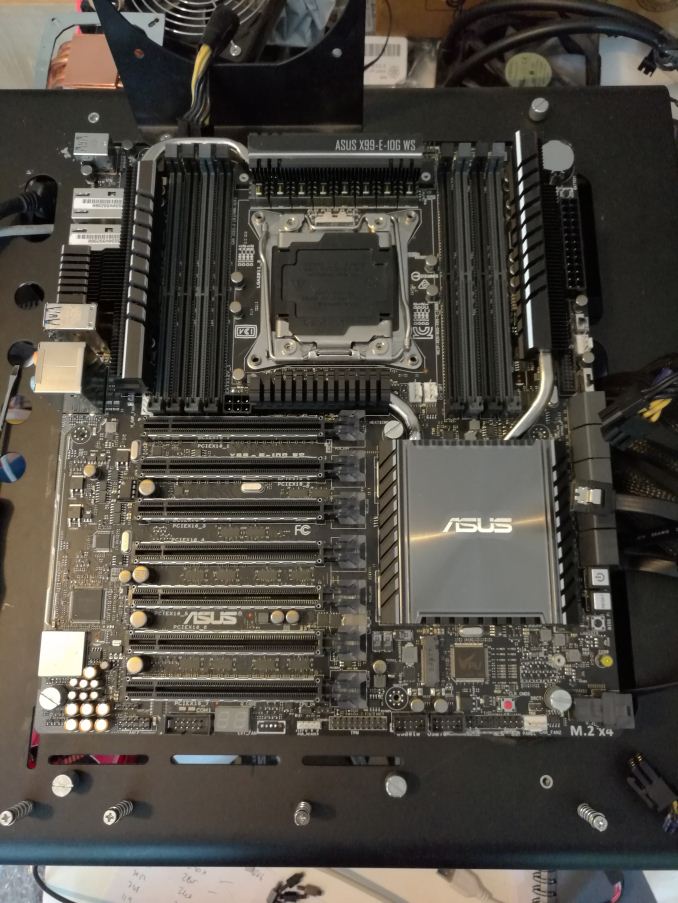
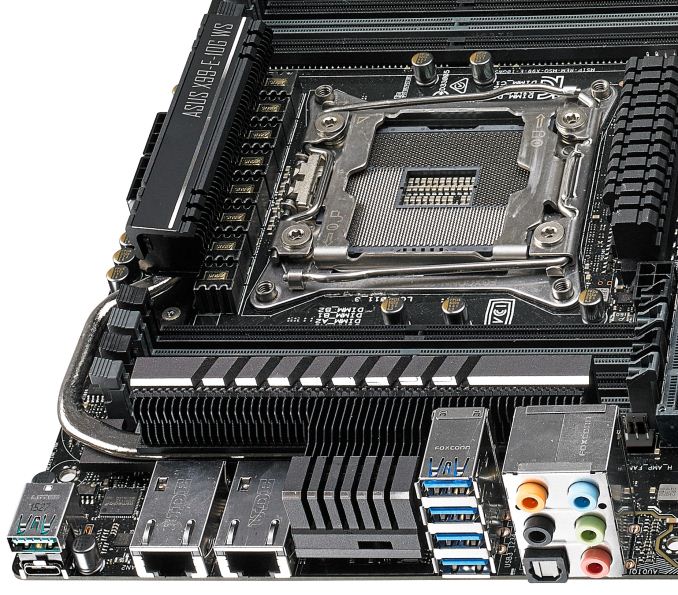
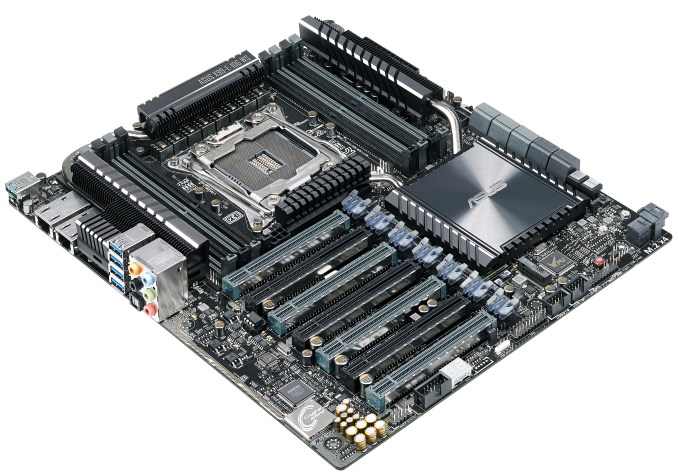

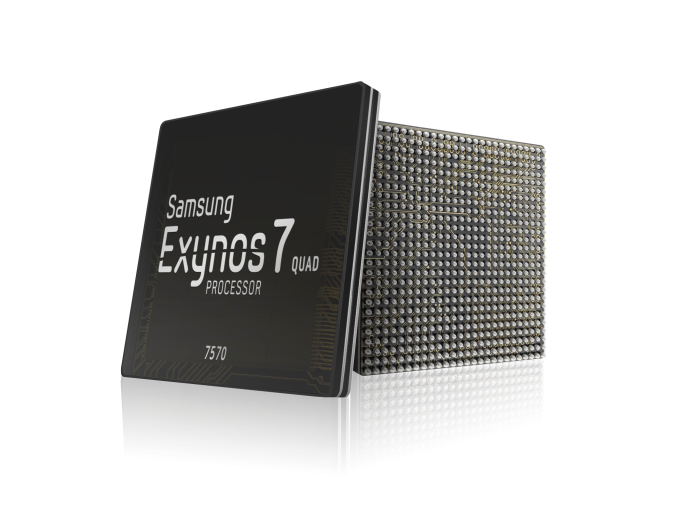

















Bookmarks